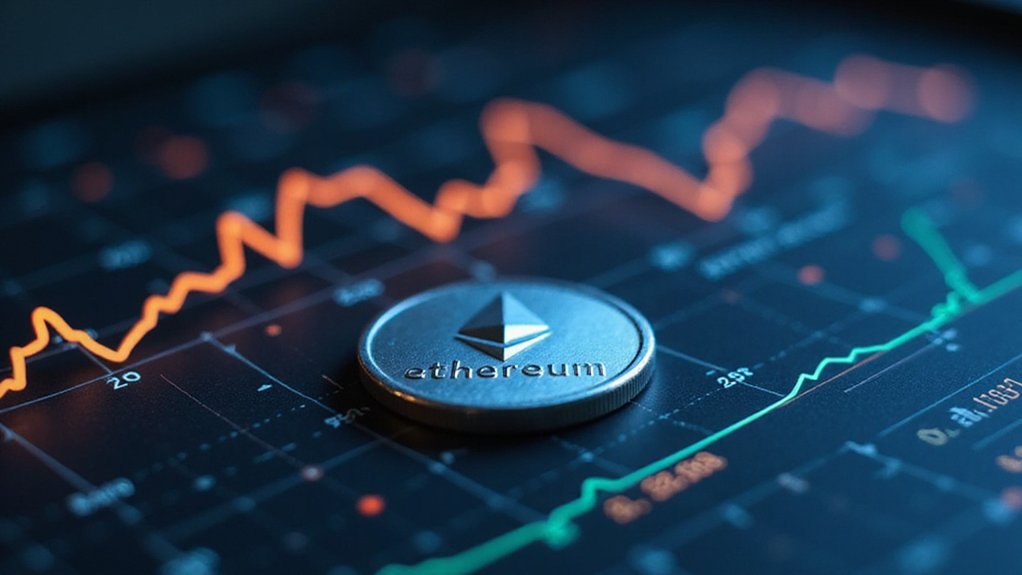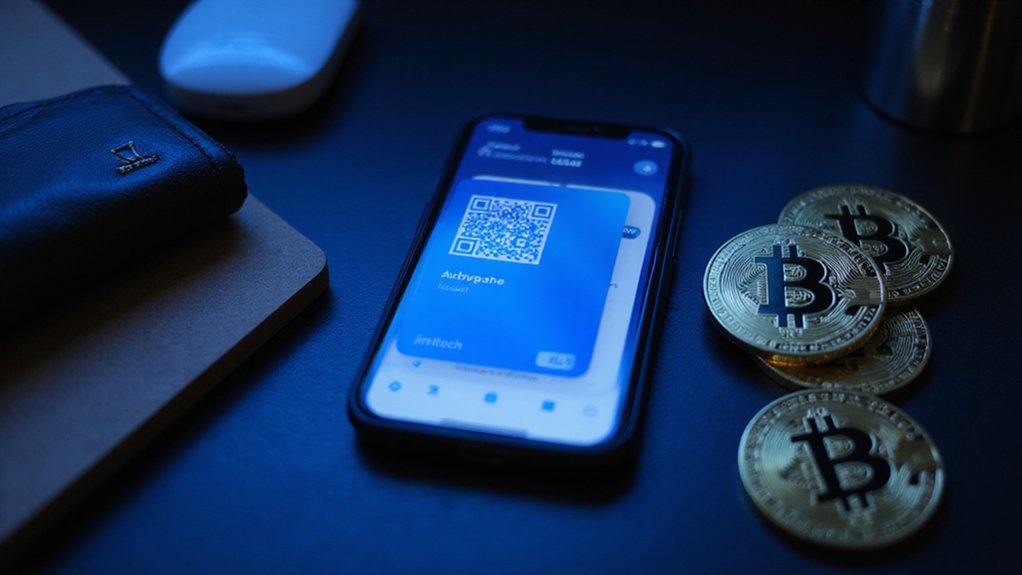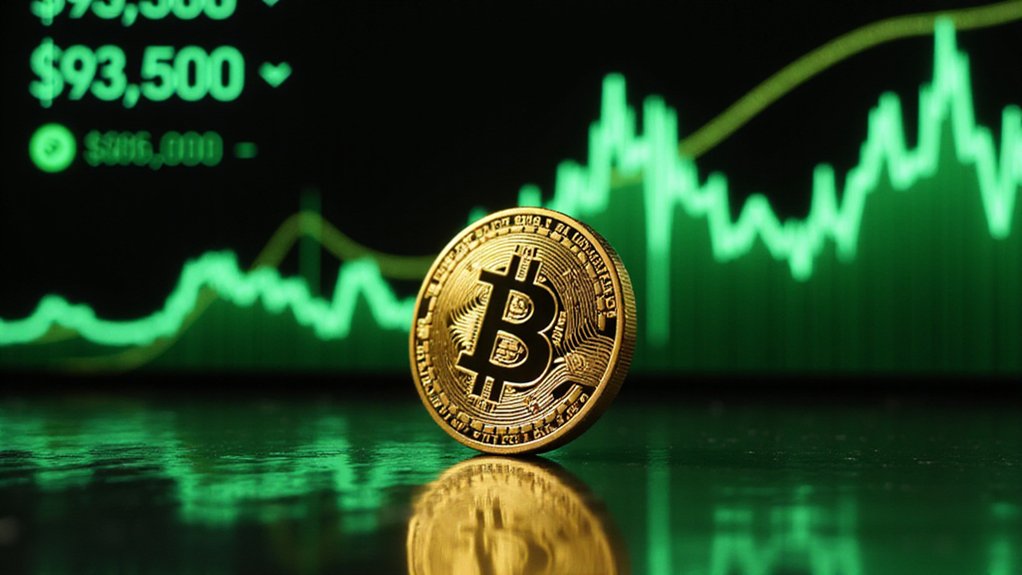Crypto gas fees function as transaction tolls that compensate validators for their computational work on blockchain networks like Ethereum. These essential payments—calculated by multiplying gas limit (anticipated computational work) by gas price (cost per unit)—create a competitive marketplace for transaction processing while preventing network spam. Notorious for volatility during congestion periods, fees surge when users vie for limited block space, compelling strategic timing decisions that balance urgency against cost-efficiency. Understanding this economic microcosm reveals the true mechanics of blockchain operations.

Blockchain transaction fees—the oft-overlooked yet inescapable toll collectors of the crypto highway—represent one of the most essential yet frequently misunderstood aspects of cryptocurrency operations.
These “gas fees,” as they’re colloquially known in the ecosystem, function as the necessary payment required to execute operations on blockchain networks, with Ethereum standing as the most prominent example.
When users initiate transactions, they’re fundamentally compensating validators (or miners in older proof-of-work systems) who perform the computational labor of verifying and securing these transactions within the immutable ledger.
Validators: the digital backbone receiving compensation for their invisible yet essential computational validation of our blockchain existence.
The mechanics of gas fees operate with surprising complexity for such a fundamental component.
Each fee comprises two primary elements: the gas limit (maximum computational work anticipated) multiplied by the gas price (cost per unit of work)—often denominated in gwei, that charmingly diminutive fraction (10^-9) of Ethereum’s native currency.
This seemingly arcane calculation serves a vital economic purpose; it aligns incentives between network participants while establishing a marketplace for transaction processing.
One might reasonably wonder why such a system couldn’t operate without fees, but the answer reveals blockchain’s elegant economic design—without financial incentives, who would validate transactions?
Gas fees prevent malicious actors from network spamming by attaching meaningful costs to each transaction.
Gas fees exhibit notorious volatility that can perplex even seasoned crypto enthusiasts.
During periods of network congestion—when everyone simultaneously rushes to purchase the latest NFT collection or flee a market downturn—fees surge dramatically as users compete for limited block space.
The complexity of transactions further compounds costs; a simple transfer demands far less computational work than executing an intricate smart contract interacting with multiple protocols.
For users maneuvering this financial labyrinth, gas fees represent a practical consideration affecting everyday blockchain interactions.
The system compels strategic decision-making about transaction timing and fee bidding, creating an unusual economic microcosm where participants constantly balance urgency against cost-efficiency.
While critics might view these fees as friction impeding adoption, they remain an indispensable component maintaining the economic security and operational integrity of blockchain networks.
These fees power the computational resources of the Ethereum Virtual Machine which executes smart contracts deterministically across the decentralized network.
After Ethereum’s transition to proof-of-stake in 2022, a portion of these fees now rewards ETH stakers who contribute to network security.
Frequently Asked Questions
How Do I Reduce Gas Fees When Trading Cryptocurrency?
Reducing gas fees demands a multi-pronged strategy: executing transactions during off-peak hours (weekends, late nights), when network congestion inevitably wanes; leveraging Layer-2 solutions (Optimism, ZK-Rollups) that process transactions off-chain; utilizing alternative blockchains with compatible standards but lower costs; optimizing transaction methods through batching multiple transfers; and—for the particularly savvy trader—taking advantage of gas fee discount programs that offer rebates when using specific native tokens.
Each approach, while requiring some additional planning, yields substantial savings.
Can Gas Fees Be Paid With Tokens Other Than ETH?
On Ethereum’s mainnet, gas fees must be paid in ETH—a non-negotiable protocol requirement that occasionally frustrates traders juggling multiple assets.
However, workarounds exist: meta-transactions allow third-party relayers to front ETH costs while accepting different tokens as reimbursement, and certain Layer 2 solutions like Polygon (MATIC) or alternative networks like Binance Smart Chain (BNB) and Avalanche (AVAX) permit gas payments in their native tokens, circumventing Ethereum’s ETH-exclusivity entirely.
Which Blockchains Have the Lowest Gas Fees?
Several blockchains have emerged as particularly fee-efficient alternatives to Ethereum’s often prohibitive costs.
Solana leads with transactions typically costing mere fractions of a cent, while NEAR Protocol maintains competitive pricing through its dynamic fee structure.
Polkadot’s Dutch auction system keeps costs reasonable at approximately 0.003 DOT per transaction.
For the truly fee-averse, NANO offers virtually free transactions, while Ripple and Stellar both operate at sub-penny levels—a relief for those weary of Ethereum’s unpredictable fee spikes.
Are Gas Fees Tax-Deductible When Reporting Crypto Transactions?
Gas fees aren’t directly tax-deductible as standalone expenses, but they do impact tax liability through cost basis adjustments.
When purchasing crypto, these network levies increase acquisition cost; when selling, they reduce gross proceeds—both scenarios potentially lowering capital gains.
The IRS, in its infinite wisdom, differentiates between personal transactions (where fees merely adjust capital gains calculations) and business activities (where they might qualify as legitimate business expenses).
Proper documentation remains essential for either scenario.
How Do Gas Fees Impact NFT Minting and Trading?
Gas fees greatly impact NFT minting and trading by introducing variable transaction costs that can skyrocket during high-demand events—recall Yuga Labs’ $150 million gas fee debacle.
These unpredictable costs complicate budgeting for creators, deter market participation during congestion, and influence platform selection.
Users adapt by timing transactions for off-peak periods, while platforms implement layer-2 solutions like Polygon to reduce fees.
The resulting ecosystem favors sophisticated participants who can navigate these financial hurdles (and occasionally absurd pricing dynamics).









